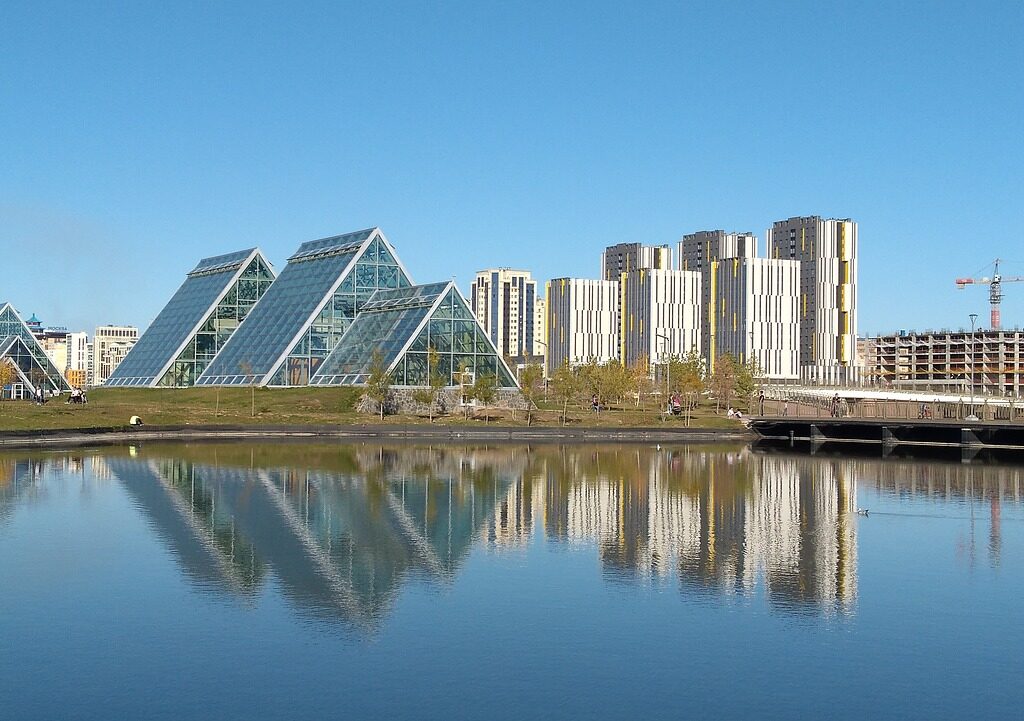Kazakhstan is on track to become the wealthiest country in the post-Soviet space in terms of GDP per capita, according to the latest figures from the International Monetary Fund (IMF). The Central Asian nation’s GDP per capita is expected to reach $14,770 in 2025, surpassing Russia’s $14,260 and China’s $13,690. Turkmenistan follows at $13,340.
Other countries in the region remain considerably behind. Georgia, Armenia, and Moldova are projected to range between $8,000 and $9,500, while Central Asian neighbours Kyrgyzstan and Tajikistan will stay below $3,000 and $1,500 respectively.
Positive Outlook
The IMF and other major international financial institutions have forecast a favourable economic trajectory for Kazakhstan, citing moderate to strong GDP growth driven by oil production, services, and infrastructure development. However, they have also cautioned that the country remains vulnerable to global economic conditions, such as slowdowns in major economies, regional instability, and fluctuations in commodity prices.
Despite these risks, Kazakhstan is pressing ahead with substantial investment plans. This year, 45 large-scale industrial projects worth more than $4.4 billion are under way, according to Prime Minister Oljas Bektenov. These initiatives are expected to create approximately 20,000 new jobs.
Sectoral Growth
Economic performance over the first eight months of 2025 has shown consistent growth across multiple sectors. Agriculture expanded by 3.7 per cent, with output in agriculture, forestry, and fisheries up 4 per cent since the beginning of the year. Transport and logistics recorded one of the largest increases, rising more than 22 per cent.
Trade remains a major growth driver, accounting for nearly 20 per cent of GDP. It grew by 8.6 per cent year-on-year, supported by solid gains in both wholesale and retail activity. The majority of trade is concentrated in Almaty, Astana, Shymkent, and Karaganda.
Construction has also maintained momentum, with 9.4 million square metres of housing completed in the year to date—a 5.2 per cent increase compared with 2024. Officials have urged faster implementation of regional projects to meet national targets.
Kazakhstan overtakes Russia and China in GDP per capita, reports IMF [Advocacy Lab Content] https://t.co/StHKfH6hL8 pic.twitter.com/GbuQcQLX4E
— Euractiv (@Euractiv) August 26, 2025
Economic Drivers
Kazakhstan’s rise in wealth is largely underpinned by its substantial reserves of oil, gas, uranium, and minerals, which remain key export earners. At the same time, the government has sought to diversify the economy by fostering higher-value manufacturing and processing industries.
Reforms aimed at improving the business environment, attracting foreign investment, and expanding infrastructure have helped modernise the economy. Parallel investments in education, healthcare, and social services have raised living standards and strengthened domestic demand.
The country’s strategic position between Europe and Asia has further boosted its role as a regional trade hub. Strong macroeconomic management, stable inflation, a resilient currency, and balanced public finances have also contributed to sustained growth.
With these combined factors, Kazakhstan’s per capita wealth now exceeds that of its larger neighbours, marking a significant economic milestone for the nation.

